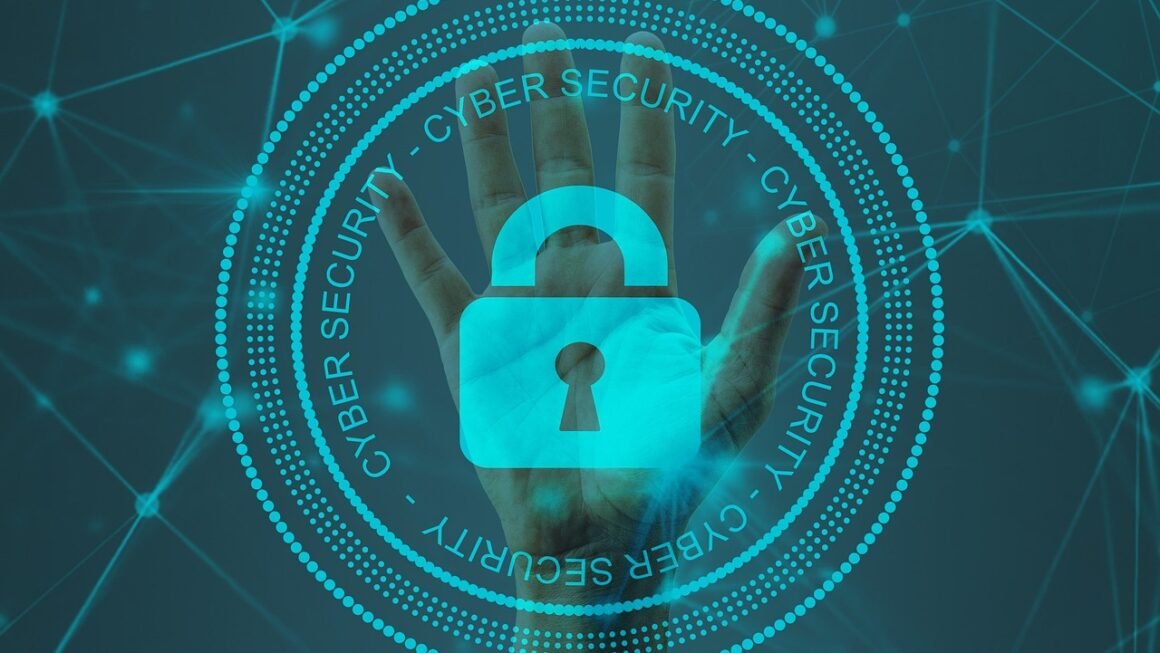In today’s digital age, our lives are increasingly intertwined with online accounts, from social media to banking and everything in between. Protecting these accounts with strong passwords is no longer optional; it’s an absolute necessity. A compromised password can expose sensitive personal and financial information, leading to identity theft, financial loss, and reputational damage. This blog post will delve into the crucial aspects of password protection, offering practical strategies and insights to help you secure your digital life.
The Importance of Strong Passwords
Why Weak Passwords Are a Major Risk
Weak passwords are like leaving your front door unlocked – an open invitation for cybercriminals. Common passwords like “password,” “123456,” or your pet’s name are easily guessed or cracked using automated tools. Data breaches consistently reveal that a significant portion of compromised accounts use these simple and predictable passwords.
- Brute-force attacks: Hackers use software to try millions of password combinations until they find the right one.
- Dictionary attacks: These attacks use lists of common words and phrases to guess passwords.
- Credential stuffing: This involves using stolen usernames and passwords from previous breaches to try and access other accounts.
The consequences of using weak passwords are substantial. They include:
- Identity theft: Hackers can use your personal information to open fraudulent accounts, apply for loans, or commit other crimes.
- Financial loss: Compromised banking or e-commerce accounts can lead to unauthorized transactions and theft.
- Reputational damage: Hackers can access your social media accounts and spread misinformation or post embarrassing content.
Statistics Highlighting Password Vulnerabilities
According to various security reports:
- A significant percentage of people reuse the same password across multiple accounts, amplifying the risk if one account is compromised.
- Many individuals still choose easily guessable passwords, despite repeated warnings.
- Phishing attacks, which trick users into revealing their passwords, remain a prevalent threat.
- Actionable Takeaway: Avoid using common passwords and never reuse passwords across different accounts.
Creating Strong and Unique Passwords
Key Characteristics of a Strong Password
A strong password is like a complex lock – difficult to crack but easy for you to remember. It should possess the following characteristics:
- Length: Aim for at least 12 characters, preferably longer. The longer the password, the more difficult it is to crack.
- Complexity: Include a mix of uppercase letters, lowercase letters, numbers, and symbols.
- Randomness: Avoid using easily identifiable information like your name, birthday, or pet’s name.
- Unpredictability: Steer clear of common words or phrases that can be found in a dictionary.
Practical Examples of Strong Passwords
Here are some examples of strong passwords:
- `Tr@n$mUtEd_ZeBr@52!`
- `P@sswOrd-G3n3r@t0r_1s_b3st`
- `My_Cat_L0v3s_t0_Sl33p!`
These passwords combine length, complexity, and randomness, making them significantly harder to crack than simple passwords.
Techniques for Remembering Complex Passwords
Creating strong passwords is only half the battle; remembering them is equally important. Here are some techniques to help you remember complex passwords:
- Use a password manager: Password managers securely store your passwords and automatically fill them in when you visit a website. They can also generate strong, random passwords for you.
- Create a passphrase: A passphrase is a long, easy-to-remember sentence that you can convert into a password by substituting letters with numbers or symbols.
- Use acronyms: Take a phrase or sentence and use the first letter of each word to create a password. For example, “My favorite color is blue and I like dogs” becomes `MfciBalD`.
- Actionable Takeaway: Implement a password management system or passphrase strategy to create and remember strong passwords effectively.
Using Password Managers
Benefits of Using a Password Manager
Password managers are essential tools for maintaining strong and secure passwords across all your online accounts. They offer a range of benefits:
- Secure storage: Password managers encrypt your passwords, protecting them from unauthorized access.
- Automatic generation: They can generate strong, random passwords that are difficult to crack.
- Auto-filling: Password managers automatically fill in your usernames and passwords when you visit a website, saving you time and effort.
- Cross-platform compatibility: Most password managers work on multiple devices, including computers, smartphones, and tablets.
- Security auditing: Some password managers can identify weak or reused passwords and prompt you to update them.
Popular Password Manager Options
There are several reputable password managers available, including:
- LastPass: A popular option with a free tier and premium features.
- 1Password: A subscription-based service known for its security and user-friendly interface.
- Bitwarden: An open-source password manager that offers both free and paid plans.
- Dashlane: A feature-rich password manager with advanced security features.
- Google Password Manager: Integrated into your Google account for seamless use across devices.
How to Choose the Right Password Manager
When choosing a password manager, consider the following factors:
- Security: Look for a password manager that uses strong encryption and offers two-factor authentication.
- Features: Choose a password manager that offers the features you need, such as password generation, auto-filling, and security auditing.
- User-friendliness: Opt for a password manager with an intuitive interface that is easy to use.
- Pricing: Compare the pricing plans of different password managers to find one that fits your budget.
- Platform compatibility: Ensure that the password manager works on all your devices.
- Actionable Takeaway: Implement a password manager to generate, store, and manage your passwords securely and efficiently.
Multi-Factor Authentication (MFA)
What is Multi-Factor Authentication?
Multi-factor authentication (MFA), also known as two-factor authentication (2FA), adds an extra layer of security to your accounts by requiring you to provide two or more verification factors when you log in. This makes it significantly harder for hackers to access your accounts, even if they have your password.
Types of Authentication Factors
There are several types of authentication factors:
- Something you know: This is your password or PIN.
- Something you have: This is a physical device, such as a smartphone or security key.
- Something you are: This is a biometric identifier, such as your fingerprint or face.
How MFA Enhances Security
MFA significantly reduces the risk of unauthorized access to your accounts because hackers need to compromise multiple verification factors to gain access. Even if they obtain your password, they still need access to your phone or another authentication device.
Enabling MFA on Your Accounts
Most online services offer MFA as an optional security feature. Here’s how to enable MFA on some popular platforms:
- Google: Go to your Google Account settings and enable two-step verification.
- Facebook: Go to your Security and Login settings and enable two-factor authentication.
- Amazon: Go to your Login & Security settings and enable two-step verification.
- Microsoft: Go to your Microsoft account security settings and enable two-step verification.
- Actionable Takeaway: Enable multi-factor authentication on all your important accounts to significantly enhance your security.
Staying Vigilant and Proactive
Recognizing and Avoiding Phishing Attacks
Phishing attacks are a common way for hackers to steal your passwords. They involve sending deceptive emails or messages that trick you into revealing your credentials. Be wary of emails or messages that:
- Ask for your password or other sensitive information.
- Contain suspicious links or attachments.
- Create a sense of urgency or threaten negative consequences if you don’t act immediately.
- Have poor grammar or spelling errors.
Always verify the sender’s email address and contact the organization directly if you’re unsure whether a message is legitimate.
Regularly Updating Passwords
It’s a good practice to change your passwords periodically, especially for your most important accounts. This helps to mitigate the risk of password breaches and unauthorized access.
- Update passwords every 3-6 months: Regular updates minimize the window of opportunity for attackers.
- Change passwords after a data breach: If a service you use announces a data breach, change your password immediately.
- Use different passwords: Avoid reusing the same password across multiple accounts.
Monitoring Account Activity
Regularly check your account activity for any suspicious or unauthorized transactions. Look for:
- Unknown logins from unfamiliar locations.
- Unusual transactions or purchases.
- Changes to your account settings that you didn’t make.
Report any suspicious activity to the service provider immediately.
- Actionable Takeaway:* Stay informed about security threats, regularly update your passwords, and monitor your account activity for any signs of compromise.
Conclusion
In conclusion, robust password protection is a fundamental aspect of online security in the modern world. By understanding the risks associated with weak passwords, implementing strong password practices, utilizing password managers, enabling multi-factor authentication, and staying vigilant against phishing attacks, you can significantly reduce your risk of becoming a victim of cybercrime. Remember, your digital security is an ongoing process that requires consistent effort and attention. Make password protection a priority today to safeguard your personal and financial information.



